A British Challenger 1 Set the Record for the Longest Tank-on-Tank Kill in 1991
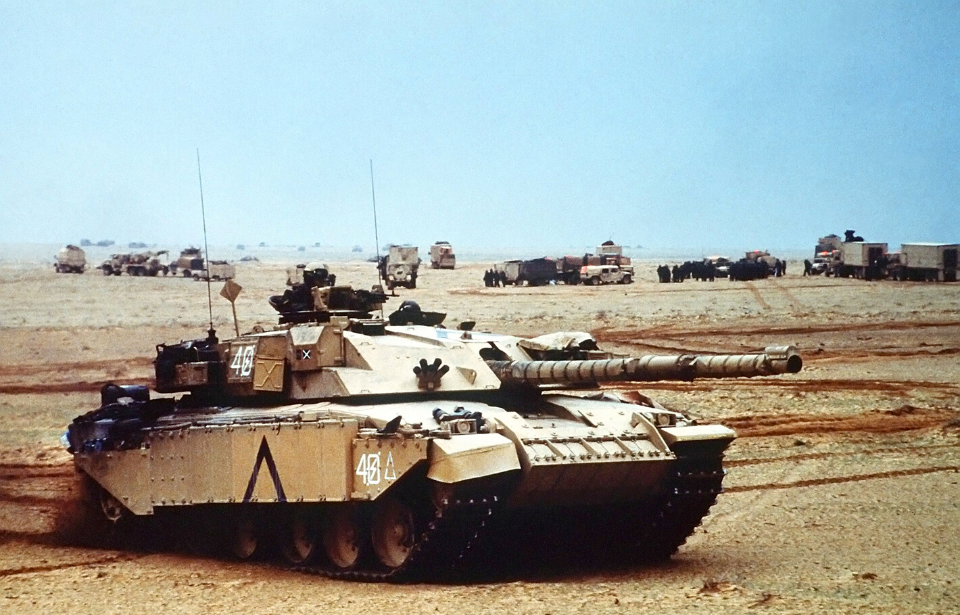
The FV4030/4 Challenger 1 tank had a rocky start. It wasn’t very reliable and had a poor rate of fire. As such, a lot of servicemen were losing faith in it. No one could have guessed that, during the Gulf War, the tank would replace its negative reputation with a positive one. The Challenger 1 not only impressed British forces and others with its performance, but also set a world record that has yet to be beaten.
Development of the Challenger 1
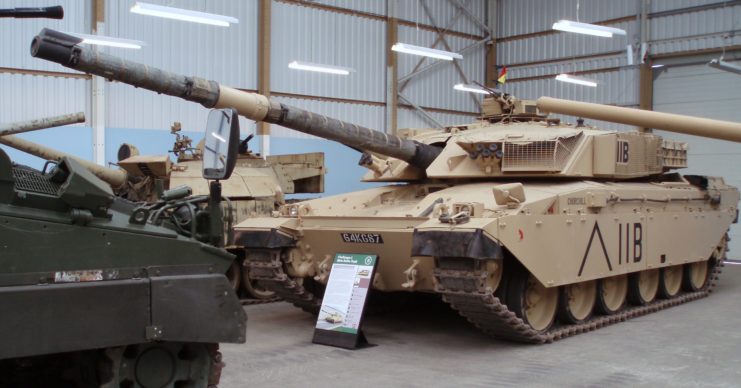
What originally started as a tank developed by the British and purchased by the Iranian Shah turned out to be the United Kingdom’s most powerful military vehicle. Intended to become an improved model of the FV4201 Chieftain, Britain was tasked by Iran with developing the new tank. The country had been the largest foreign operator of the Chieftain, with over 700 units.
The Iranian Revolution led to the order, as well as other contracts with Western powers, being canceled. Britain’s Ministry of Defence took on the project for itself and reworked the design to fit the country’s military needs. The Challenger 1 Main Battle Tank (MBT) was delivered in 1983 to British Army groups stationed in West Germany, with 420 being built before production was halted. The tank would remain in service with the British until 2001.
The Challenger 1 featured some impressive equipment
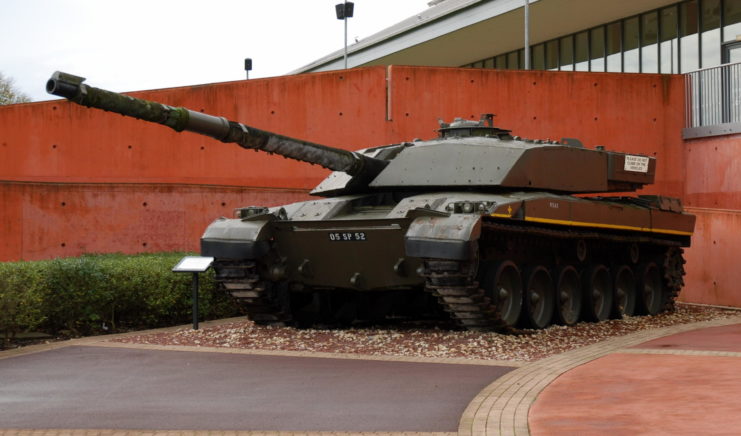
The Challenger 1 was covered in composite armor made up of steel and ceramics, protecting it against various weapons attacks. It was also equipped with a fully-stabilized Royal Ordnance L11A5 120 mm rifle main gun and two 7.62 mm machine guns, one (L8A2 caliber) mounted coaxially with the main gun and another optional one (L37A2 caliber) that could be affixed to the commander’s cupola.
The tank was operated by a a crew of four, including a commander, gunner, loader and driver. It was also fitted with an advance global positioning system (GPS) and a Thermal Observation and Gunnery System that allowed the driver to see at night, in poor visibility and through smokescreens. Its operational range was 280 miles, but additional fuel tanks could be mounted to the rear of the hull for extended range.
The Canadian Army Trophy
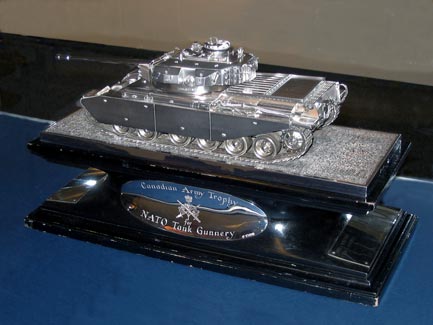
During the late 1980s, the Challenger 1 was developing a reputation as an unreliable vehicle. This was particularly shown during the 1987 Canadian Army Trophy (CAT) competition in West Germany, where tanks and crews from NATO countries competed to see their competitive ranking. The Challenger 1 finished last in rate-of-fire.
Following the failed display at the CAT, the Minister of State for the Armed Forces, Ian Stewart, said, “I do not believe that the performance of tanks in the artificial circumstances of a competition, such as the recent Canadian Army Trophy, is a proper reflection of their capability in war.”
Stewart was right. The Challenger 1 may not have performed in the competition, but it really outdid itself during the Gulf War.
Service during the Gulf War
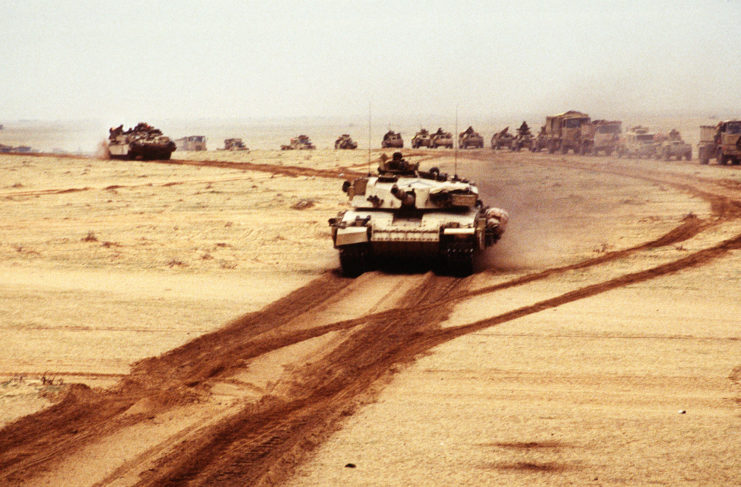
The Ministry of Defence continued to promote the usefulness of the Challenger 1, despite its failed performance. It was able to shake its horrible reputation when 221 tanks joined the Gulf War. When the tank faced the Iraqi Army, it was superior, as the enemy force had never seen anything like it before.
By the end of the three-day ground war during Operation Desert Storm, the Challenger 1s had claimed approximately 300 Iraqi tanks and were responsible for taking other armored and “soft” vehicles. The tank was so powerful that the Iraqi Army failed to destroy even one. Those that didn’t make it through battle were retired due to technical issues.
By the end of the Gulf War, there was no question as to the reliability and success of the Challenger 1 in combat. It was as if the tank at the Canadian Army Trophy was completely different than the one used on the battlefield.
Holding the world record for a tank-on-tank kill
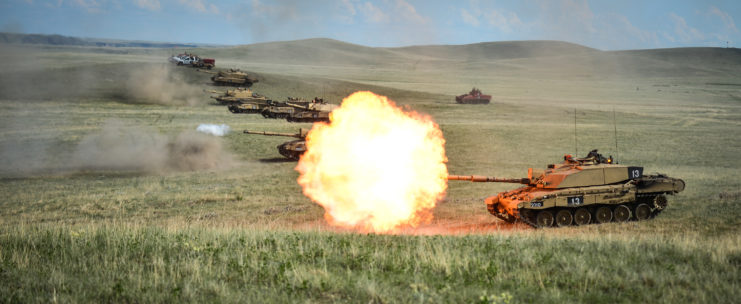
During the Gulf War, the Challenger 1 accomplished an incredible feat that has yet to be broken. The tank with the callsign “11B” fired an armor-piercing fin-stabilized discarding sabot (APFSDS) at an Iraqi tank. Pretty standard. The incredible thing was that the Iraqi tank was located between 4,700 and 5,100 meters away – that’s nearly three miles!
Although different accounts have provided varying numbers as to the distance achieved by the ’11B’ Challenger 1, the record remains the same. It completed the world’s longest tank-on-tank kill while in battle.
